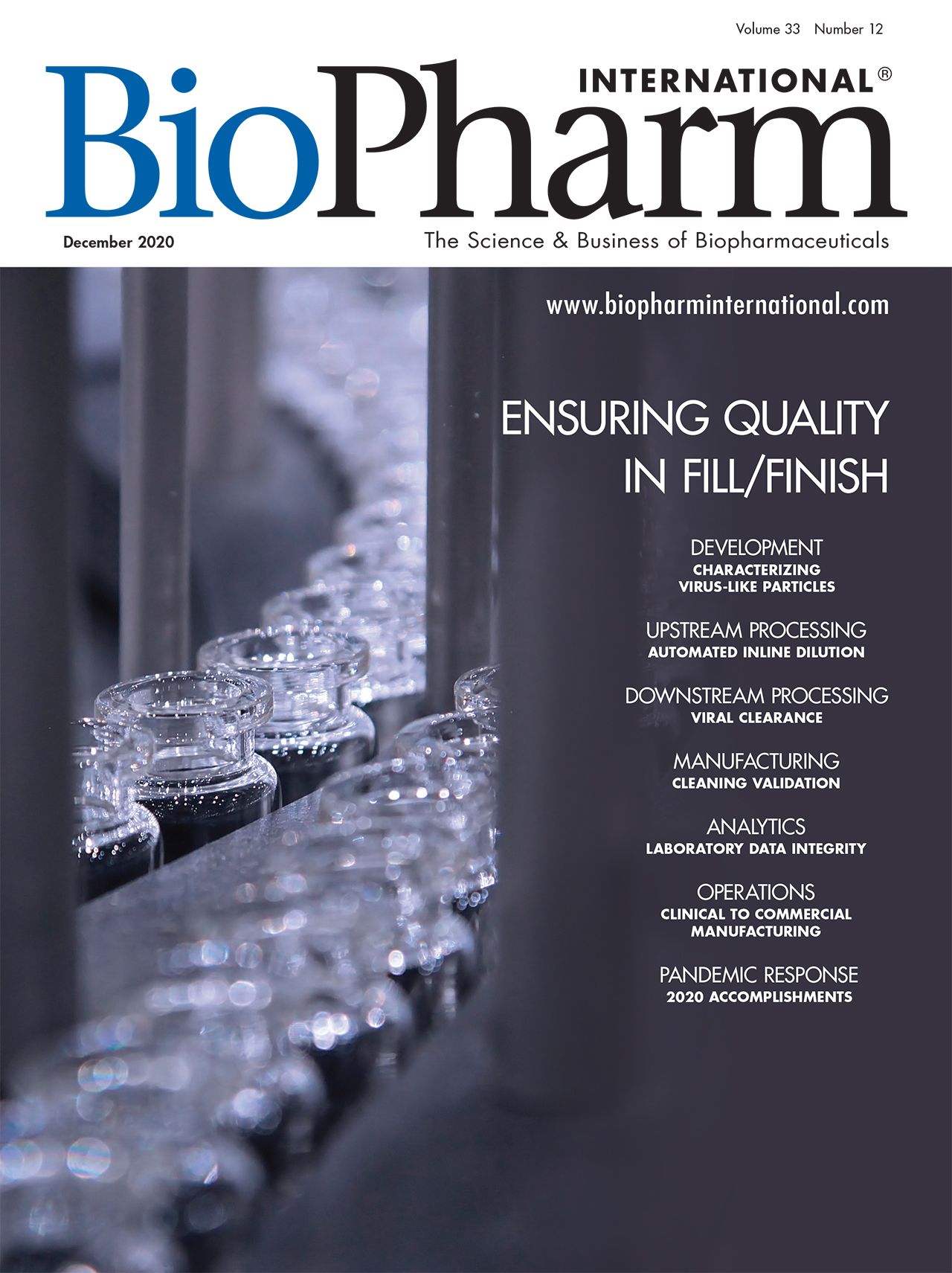Getting More Scientific About Cleaning Validation
The industry is moving beyond cleaning’s “low tech” image to embrace science-based limits and statistical approaches to control.
warut/Stock.Adobe.com

As pharmaceutical manufacturers continue to learn, the simplest of operations can prove to be the most challenging to understand and control. Cleaning is one example. No one would dispute the importance of removing even trace levels of product residue from process vessels and equipment, but variability continues to affect results and to raise questions. How consistently do operators swab? How does visual inspection ensure that equipment is truly clean?
On a more basic level, how should “clean” be defined? The industry is embracing standards to address more of these questions and to ensure product and patient safety. One sign of progress was the American Society for Testing and Materials (ASTM) Standard 3106, published in 2018 (1), says cleaning validation consultant Mohammad Ovais, a member of the team that wrote the standard. “The guide advocates the application of science, quality risk management, and statistics principles to the validation of cleaning processes. It had a major impact on the way we validate cleaning procedures, which had traditionally been opinion (not data) based,” Ovais says.
Now, more regulators, especially the European Medicines Agency (EMA), have embraced the idea of health-based exposure limits that consider the toxicological impact of materials (2). “Manufacturers are now required to set cleaning limits based on toxicity data,” Ovais explains.
Other health-based guidelines have been established by the International Society for Pharmaceutical Engineering (ISPE) with its Risk-Based Manufacture of Pharma Products (Risk MaPP) guidance, and by the Pharmaceutical Inspection Co-operation Scheme and the World Health Organization. ASTM standard E3263 for the qualification for visual inspection has recently been approved (3-7), while the Parenteral Drug Association’s (PDA’s) Technical Report on Cleaning Validation is also being updated. Ovais shared insights into cleaning validation trends with BioPharm International.
Setting cleaning validation limits
BioPharm: How have bio/pharma cleaning validation practices changed over the past decade?
Ovais (ASTM): The most significant changes have been seen in setting cleaning validation limits, changing from a ‘one off’ to a lifecycle-based mindset, and adopting a more data-driven approach to decision making. The industry and regulators have moved from historical arbitrary and unreliable approaches to more scientific approaches of setting cleaning validation limits. Instead of basing limits on 1/1000 of dose, 10ppm or LD-50 types of approaches, the limits are required to be derived from HBEL [health-based exposure limit] values.
The industry has also started looking at cleaning validation as a lifecycle concept, influenced primarily by [FDA’s] process validation guidance. Historically, the industry has relied on subjective assessments (e.g., for the selection of worst-case products based on physiochemical attributes, such as solubility, toxicity, and concentration). More companies have started to show interest in bench-scale studies for cleanability assessment and to select worst-case products based on objective evidence.
BioPharm: How are health-based exposure limits being set?
Ovais (ASTM): A health-based exposure limit, also known as permitted daily exposure (PDE) or acceptable daily exposure (ADE), is a data-derived ‘dose that is unlikely to cause an adverse effect if an individual is exposed, by any route, at or below this dose every day for a lifetime,’ as stated in ASTM E3219. Its derivation involves determination of a point of departure (PoD) and adjusting the determined PoD by various ‘uncertainty’ or ‘adjustment’ factors that consider uncertainties in the pharmacological/toxicological data used for dose-response assessment (7).
The PoDs typically used to determine HBELs include lowest-observed-(adverse)-effect level (LOAEL or LOEL). Some guidelines for deriving HBELs (4–7) are summarized in Figure I.
Figure 1. Equations for derivation of health-based exposure limits (HBELs) sourced from different guidance documents (4–7).

The guidelines differ in recommendations on various adjustment factors to be used and how they should be derived. The ranges of some of the adjustment factors are shown in Table I.
Table I. Recommended adjustment factors for health-based exposure limit (HBEL) derivation in various guidelines (4–7). CSAF is chemical specific adjustment factor. ISPE is International Society for Pharmaceutical Engineering; Risk-MaPP is risk-based manufacture of pharmaceutical products; EMA is European Medicines Agency; ASTM is American Society for Testing and Materials; LOAEL is lowest-observed-(adverse)-effect level and NOAEL is no observed effect level.

BioPharm: How should statistics be used in cleaning validation?
Ovais (ASTM): Cleaning validation results are typically evaluated by comparing individual (e.g., swab) sample results to acceptance criteria. A run passes if all results are below the criteria. This approach is simple, requires no special calculation, and is based on simple pass/fail analysis. However, it lacks statistical basis and, therefore, cannot be used to make decisions pertaining to acceptance/rejection of cleaning validation results. Statistical tools, and more guidance, are needed to evaluate cleaning process variability (e.g., from location-to-location, product-to-product, and run-to-run).
References
1. ASTM, ASTM E3106-18e1, Standard Guide for Science-Based and Risk-Based Cleaning Process Development and Validation, ASTM International, (West Conshohocken, PA, 2018).
2. EMA, Guideline on Setting Health-Based Exposure Limits for Use in Risk Identification in the Manufacture of Different Medicinal Products in Shared Facilities (2014).
3. ASTM, ASTME3263-20, Standard Practice for Qualification of Visual Inspection of Pharmaceutical Manufacturing Equipment and Medical Devices for Residues, ASTM International (West Conshohocken, PA, 2020).
4. A. Walsh, et al., Pharmaceutical Engineering 31 (4) 71–83 (2011).
5. ISPE, Risk-Based Manufacture of Pharmaceutical Products, Vol. 7, (2nd ed.), (Tampa, FL, 2017).
6. ASTM E3219-20, Standard Guide for Derivation of Health-Based Exposure Limits, ASTM International (West Conshohocken, PA, 2020)
7. E. Sargent, E.Faria, T.Pfister, et al., Regul Toxicol Pharmacol. 65 (2) 242–50 (2013).
About the Author
Agnes Shanley is the senior editor for BioPharm International.
Article Details
BioPharm International
Vol. 33, No. 12
December 2020
Pages: 41-44
Citation
When referring to this article, please cite as: A. Shanley, "Getting More Scientific About Cleaning Validation," BioPharm International 33 (12) 2020.
